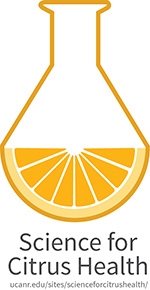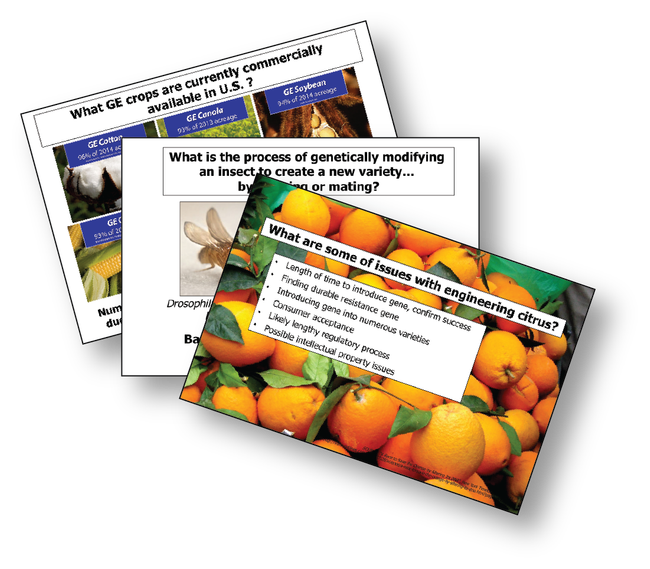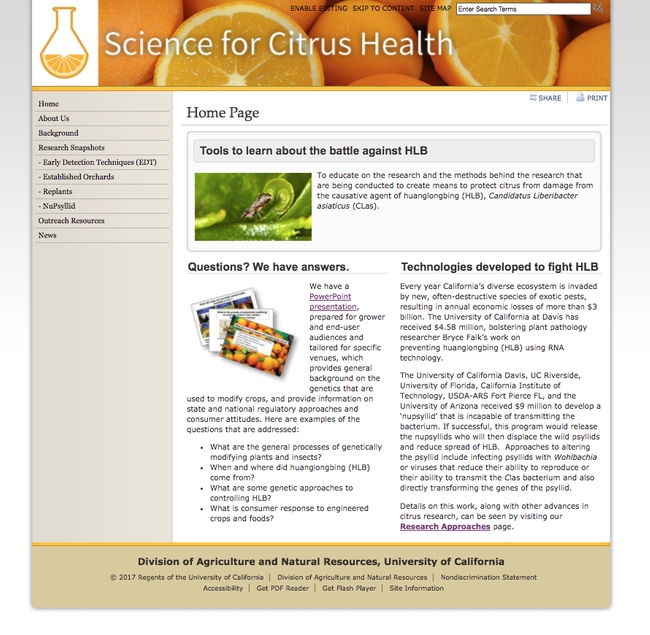
CLas is spreading in Texas and in the past year has begun to accelerate its spread in Southern California. It is imperative to inform growers and consumers about the research and approaches that are being pursued to control the spread of the disease. Through both the NIFA-sponsored NuPsyllid and RNAi-based strategy projects, we are developing extension and education information for growers and end-users, which address the use of genetics and other tools to lessen the impact of HLB on citrus.
We developed a plan that enhances existing citrus extension educator programming with three primary outreach approaches.
Citrus outreach website
This site is specifically designed to provide grower information on genetic and non-genetic strategies for control and detection of huanglongbing/citrus greening, and hosts the following three outreach resources.
PowerPoint slides

Research Snapshots
Snapshots are created to provide the latest information on various approaches being used to combat HLB. We work directly with researchers to obtain detailed information what they are doing, how they are doing it and the current status of their efforts. Research Snapshots, available on the website, can be used as fact sheets at educational venues. Snapshots are put into one of four categories, which are color-coded and interlinked to make use easier. New snapshots are being added each month.
- Nupsyllid: Approaches aimed at altering the psyllid's ability to transmit HLB
- Replants: HLB resistance strategies requiring replanting of citrus trees
- Established orchards: Approaches that could be applied to existing orchards
- EDTs: Methods used to detect HLB disease early in the infection of trees
Fact Sheets
A fact sheet, which addresses general aspects of citrus genetics, “What Makes Lemon, Oranges and Limes Look and Taste Different?”, is available for download on the website.
